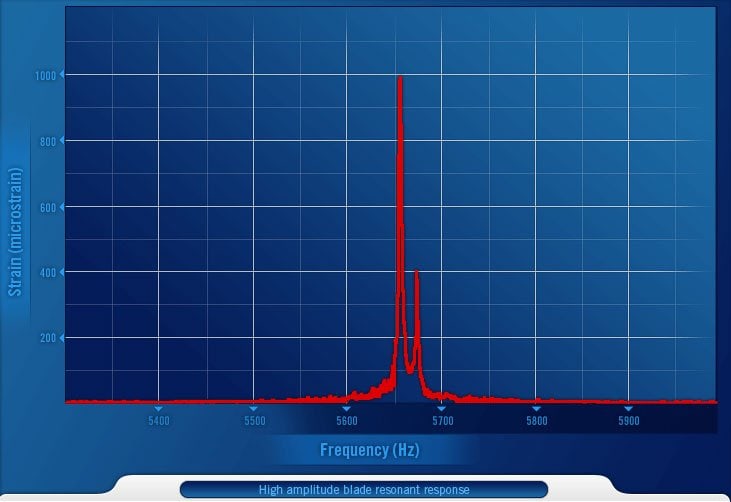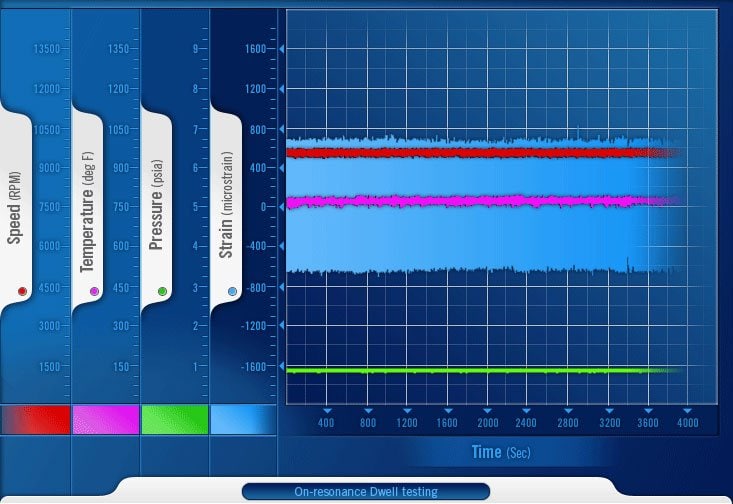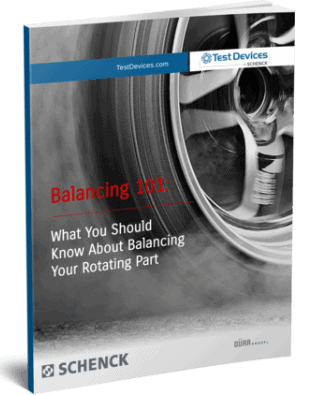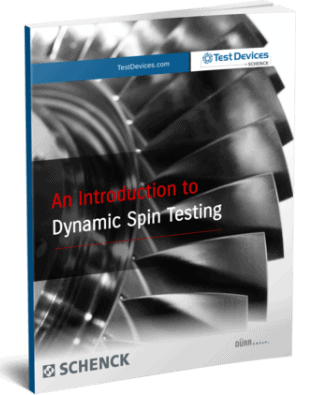Dynamic Spin Testing
Overview
Managing resonant vibration of turbine rotor blades presents a technical challenge for jet engine and industrial gas turbine programs. Under certain conditions of operation, blades vibrate in response to pulsing flow from upstream stages. When the pulses match the natural frequency of the blades, they can vibrate with large amplitudes and fracture; this is called High Cycle Fatigue.
Download Our Spin Testing Ebook
In-service damage and wear, and even the repair of integrally bladed rotors (IBRs and Blisks), often results in changes to the “tuning” of these components which can lead to unanticipated vibratory responses. Dynamic spin testing offers a means of establishing the vibratory response at the outset as well as monitoring how it may have changed after use and/or repair. High Cycle Fatigue testing (holding the rotational speed at a resonant frequency) establishes the rate at which damage can occur and helps assess the potential life of a component if the resonance remains un-damped.
Why It Matters
Any cause of blade failure in service is obviously a serious safety problem. High Cycle Fatigue is a particular concern because the frequency of vibration is very high (many thousands or even tens of thousands of cycles per second) and damage can accumulate very quickly. The aeromechanical environment experienced by turbine blades is complex and is influenced by many factors over the course of engine operation, such as Foreign Object Damage (FOD), erosion, blade replacement or other changes made to the engine or cowling. While most manufacturers conduct dynamic response validation during the design stage, it is also important to revisit whenever changes are made to the engine.
Download Our Spin Testing Ebook
Conventional Approaches to Blade and Damper Testing
To mitigate resonant vibration, engine designers can modify the geometries of IBRs, bladed disks and vanes (within limits) or they can incorporate components or features that shift the natural frequencies or dampen the amplitude of the vibration. In order to evaluate resonant behavior and the effectiveness of damping mechanisms, engine builders can use a variety of methods.
Bench Testing
Blade behavior can be tested on the bench using shakers and various kinds of vibrometry. While some helpful data can be collected, these bench tests do not include the effects of centrifugal loads, a critical factor in the initiation and propagation of fatigue cracks. For IBR’s, bench testing does not account for influences from the rest of the component. It is the equivalent of finding the tone of a bell by just pinging a small piece of it. As a result, frequencies and mode shapes determined with bench methods are not adequate to understand resonance in service.
Finite Element Analysis (FEA)
The computer-based Finite Element Analysis (FEA) approach can be used to model blade vibratory behavior fairly effectively as a baseline. FEA cannot fully model blade vibratory response in service, however, because of the inherent difficulty in establishing the boundary conditions or the effects of variations in manufacturing processes, material composition, component repair, and Foreign Object Damage (FOD) that occurs in service.
Download Our Spin Testing Ebook
Superior Approach to Blade and Damper Testing
Test Devices has developed a new approach to blade resonance evaluation, called Dynamic Spin™ Testing, which helps engine manufacturers evaluate blade/IBR resonance behavior and damping effectiveness in order to avoid or mitigate blade failure issues. Using Dynamic Spin Testing, bladed rotor components are tested in fully assembled, engine ready states. The rotor assemblies are accelerated to actual engine speeds while the blades are subjected to vibratory and thermally induced stresses matching the stresses experienced in engine operation. The excitation force used to produce resonant blade vibrations simulates engine blade-to-stator interaction, causing blade distortion.
Download Our Spin Testing Ebook
Special Capabilities for Blade and Damper Spin Testing
- Precise speed control to stay “on resonance” in order to accumulate HCF cycles and evaluate the life of blades under realistic operating conditions.
- Elevated temperature testing with axial and radial thermal gradients accounts for both mechanical and thermal stresses.
- Detection of cracks in rotating assemblies with a patented system that automatically shuts down a test when a crack has been detected, saving the flawed component for analysis.
- Excitation of resonant vibrations in bladed rotors to evaluate blade/damper design performance and HCF life by simulating excitation force imparted by engine stators.
Advantages of Dynamic Spin Testing
More Accurate, Less Risky, More Cost-Effective: Dynamic Spin Testing more accurately evaluates the blade/damper performance of turbine engine components and stages than traditional test methods, and it is both less risky and an order of magnitude less costly than engine testing.
Realistic Resonant Vibration: Dynamic Spin Testing produces realistic resonant vibration of the blades so that modal frequencies can be determined accurately. Precise speed control allows very slow resonance crossings and dwelling at resonance for characterization of fully developed modes and assessment of blade/damper performance. Slow resonance crossing also enables calculation of blade amplification factors for measuring the severity of various modes and the risk they present.
Fatigue Life Evaluation: Dynamic Spin Testing allows speed to be held at resonance for long periods of time so blade cracking can be detected to measure time to crack. Resonance dwell testing is important for measuring the reduction in fatigue life that results from various kinds of blade damage from foreign object impacts.
Test Options and Flexibility: Dynamic Spin Testing offers options to test characterization of airfoil response, evaluation of damper performance and life assessment of blades until they crack.
Flexibility: By including the static centrifugal stress and tailoring tests for specific rotor configurations by adjusting speed, temperature and excitation force, Dynamic Spin Testing provides a powerful new method for testing bladed turbine engine assemblies.
IBR/Blisk Repair Validation and Retuning: IBR/Blisk components that experience FOD can be repaired using various methods and returned to service. These various repair methods often change the natural resonance of the part, which can result in premature failure. Evaluation of the new resonance characteristics enables retuning of the component to avoid such situations. HCF testing is also a great means of validating the repair.












